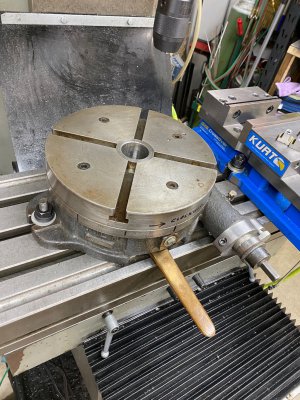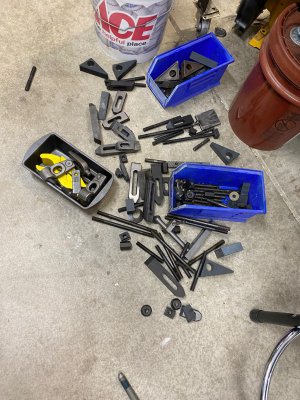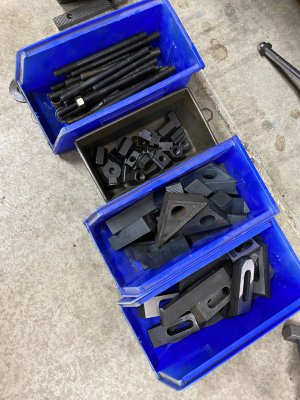- Joined
- Mar 26, 2018
- Messages
- 8,407
Moving my 10" C Gorton rotary table to the mill table is always preceded by a question, is there another way?
This thing hurts me! It has to weigh 80 lbs. or more.
Once I got it up there, caught my breath, I had to find some hold downs.
This started another project. I need to organize this mess.
Those mill hold down kits come with the hanging organizers. I find them to be a royal PITA. You can't get the T nuts out and the hex nuts get stuck down in their slots.
There has to be a better way.
This thing hurts me! It has to weigh 80 lbs. or more.
Once I got it up there, caught my breath, I had to find some hold downs.
This started another project. I need to organize this mess.
Those mill hold down kits come with the hanging organizers. I find them to be a royal PITA. You can't get the T nuts out and the hex nuts get stuck down in their slots.
There has to be a better way.






 I'm still finding them down the other basement so I may have to go to a larger drawer . I buried quite a few of these in the past , they multiplied when I wasn't looking and had way too many . And like you , I tossed all those original holders . PITA .
I'm still finding them down the other basement so I may have to go to a larger drawer . I buried quite a few of these in the past , they multiplied when I wasn't looking and had way too many . And like you , I tossed all those original holders . PITA .